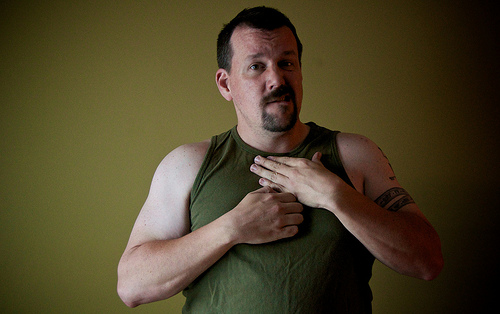
Heart Attack: A Serial Killer, And The Most Common Cause Of Death Worldwide
Heart disease includes means a cluster of several types of heart conditions. In North America however, the most common type is coronary arterial disease. The arteries are responsible for transporting and supplying blood to the heart. In coronary arterial disease there is build up of plaque in the arteries supplying blood to the heart, often resulting in but not limited to heart attacks, angina, arrhythmias and heart failure. It is important to pay close attention to any 'strange' symptoms, since they could be related to a heart attack. Additionally, some symptoms can be not the typical or common ones, and sometimes symptoms do mimic different conditions, making it often difficut to 'rely' on symptoms for proper diagnosis. As such, when in doubt-do not wait. A second could make a difference, and can mean death, brain damage, or permanent heart damage. If you experience any unusual symptoms, or feel you could be having a heart attack, please call 911, and tell a friend or family member available if you can, so care can be started as soon as possible.
- Important notification about information and brand names used in this slideshow!
- Photo courtesy of bark by Flickr : www.flickr.com/photos/barkbud/5180808452/
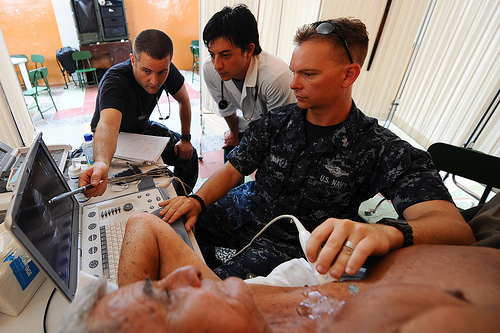
Why Do So Many Still Die From Heart Attacks That Are Preventable And Controllable?
Although heart disease is preventable and controllable, and despite significant progress in research and education about heart disease, it is still the most common cause of death in North America and other industrialized nations across the globe. So why is this still happening? The bottom line? heart-related deaths continue at an alarming rate because somewhere, in some way, somehow, and at sometime along the way we forgot the essentails such as: Exercising and staying active Reading food labels Limiting our alcohol consumption Staying engaged with care providers Cooking healthy meals at home and eating out less Relaxing more and stressing less Limiting our levels sodium consumption Eliminating or reducing our consumption of "Junk" foods Adding adequate servings of fresh fruits and vegetables to our diets Complying with medication requirements and keeping appointments Regularly checking blood sugar, cholesterol and blood pressure levels There is no time like the present. The perfect time to start incorporating the above hearty habits is now. Having a game plan, and deciding to change even one habit, whether it is to exercise more, eat less salty foods and so on will boost your heart health. Do it now. Start today.
- Important notification about information and brand names used in this slideshow!
- Photo courtesy of Official U.S. Navy Page by Flickr : www.flickr.com/photos/usnavy/5764936212/

High Blood Cholesterol? "Junk In=JunkOut" : Watch Your Diet And Check Your Levels Regularly
In North America, especially in the United States,1 in 6 adults has high levels of blood cholesterol. Since high LDL cholesterol levels is a major contributor of heart disease, individuals with high levels of blood cholesterol are at risk for heart attacks and other heart-related complications. As such, even with their many side effects, at least 35 million Americans take powerful (LDL) cholesterol-lowering statin drugs to maintain healthy cholesterol levels. Although the body needs that fatty, waxy substance known as cholesterol, like most things, too much of anything is not always a good thing. In this case, excess cholesterol in the blood eventually builds up on the arterial walls, resulting in result in heart diseases, heart attacks and strokes. Foods high in fats such as fried foods, very rich dairy, and processed foods are major contributors to high cholesterol. Exacerbating this situation is the fact that since there are really no symptoms of high cholesterol, unless checked, many individuals are not aware they are in trouble, or that they are at risk. However a simple and fast blood test can tell then individuals what their cholesterol levels are, so they can then start actively taking steps to prevent high cholesterol...
In North America, especially in the United States,1 in 6 adults has high levels of blood cholesterol. Since high LDL cholesterol levels is a major contributor of heart disease, individuals with high levels of blood cholesterol are at risk for heart attacks and other heart-related complications. As such, even with their many side effects, at least 35 million Americans take powerful (LDL) cholesterol-lowering statin drugs to maintain healthy cholesterol levels. Although the body needs that fatty, waxy substance known as cholesterol, like most things, too much of anything is not always a good thing. In this case, excess cholesterol in the blood eventually builds up on the arterial walls, resulting in result in heart diseases, heart attacks and strokes. Foods high in fats such as fried foods, very rich dairy, and processed foods are major contributors to high cholesterol. Exacerbating this situation is the fact that since there are really no symptoms of high cholesterol, unless checked, many individuals are not aware they are in trouble, or that they are at risk. However a simple and fast blood test can tell then individuals what their cholesterol levels are, so they can then start actively taking steps to prevent high cholesterol, and reduce their levels for those with already high levels. A cholesterol test should be done after fasting for 9-12 hours(no medication, food or liquids) , and typically measures total cholesterol, trigycerides, good (HDL) cholesterol and bad (LDL) cholesterol levels. Ideally, one's blood cholesterol level should be approximately 200 mg/dL. A reading of 201-240+mg/dl puts you at twice the risk for coronary heart disease.
- Important notification about information and brand names used in this slideshow!
- Photo courtesy of Jonathan Kung by Flickr : www.flickr.com/photos/vew82/5910555470/
- www.cdc.gov
- http://www.heart.org
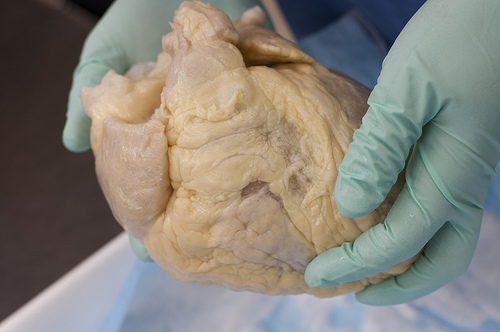
Common Warning Signs Of Heart Attacks, Differences: Are Women Truly From Venus And Men From Mars?
Contrary to what we see on television where it is always obvious someone is having a heart attack, many attacks start very slowly with slight discomfort, tightness or pain that gradually escalates . Many times, the sufferer is unclear about what is really happening, and will resort to keeping a watch on the present symptoms, or dismissing them as just a strain and nothing too serious. This approach can be deadly, since in most cases individuals have simply and unfortunately waited too long before getting help. As such, the more common signs that indicate a heart attack include: Slight chest discomfort, pain, pressure, feeling full, or tightness that worsens gradually, or goes away only to re-appear in minutes, hours and even days. Uneasy, annoying discomfort and pain in the arms, shoulders, neck, jawbones, back or stomach Labored breathing and shortness of breath that can be accompanied by pain and discomfort in the center of the chest It is important to know that some symptoms differ in men and women. For example, although chest pain and discomfort is typically common in both men and women, women are more likely to present with other less common symptoms, such as vomiting. As such...
Contrary to what we see on television where it is always obvious someone is having a heart attack, many attacks start very slowly with slight discomfort, tightness or pain that gradually escalates . Many times, the sufferer is unclear about what is really happening, and will resort to keeping a watch on the present symptoms, or dismissing them as just a strain and nothing too serious. This approach can be deadly, since in most cases individuals have simply and unfortunately waited too long before getting help. As such, the more common signs that indicate a heart attack include: Slight chest discomfort, pain, pressure, feeling full, or tightness that worsens gradually, or goes away only to re-appear in minutes, hours and even days. Uneasy, annoying discomfort and pain in the arms, shoulders, neck, jawbones, back or stomach Labored breathing and shortness of breath that can be accompanied by pain and discomfort in the center of the chest It is important to know that some symptoms differ in men and women. For example, although chest pain and discomfort is typically common in both men and women, women are more likely to present with other less common symptoms, such as vomiting. As such, it is critical to learn those warning signs for women.
- Important notification about information and brand names used in this slideshow!
- Photo courtesy of Andria by Flickr : www.flickr.com/photos/fauxlaroid/8179610179/
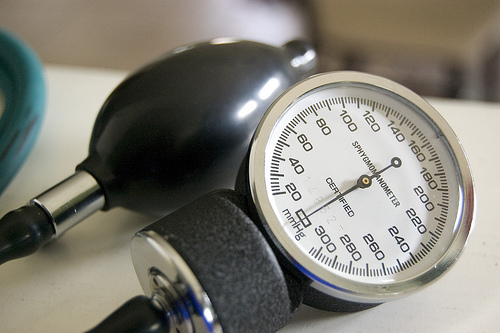
High Blood Pressure: The "Silent Killer" That Attacks Without Symptoms-Keep Your Numbers In Check
Often called the "silent killer", high blood pressure or hypertension generally has no symptoms, however the condition wreaks havoc and can cause permanent damage to the body, particularly the brain, the heart and the kidneys. The heart supplies blood into the arteries which supply blood to the body. With each heart beat, there is a pressure of the blood inside the arteries. This is referred to as blood pressure or hypertension. In essence, the pressure in the arteries is high, and is above the normal range. Blood Pressure consists of two measurements: Systolic and Diastolic. the top value or number represents Systolic blood pressure, and Diastolic blood pressure is the bottom value. For example 120/80: is a normal reading, anything higher than 120/80 and readings as high as 180/110 is a major cause for concern. With extreme levels, you could experience nosebleeds, labored breathing, very bad prolonged headaches among others. This requires immediate emergency medical treatment. You should check your blood pressure regularly, and it should be checked by your doctor at least once a year. While medications can be prescribed to lower and maintain lower blood pressure levels, there are natural and easier, healthy ways to do so. The...
Often called the "silent killer", high blood pressure or hypertension generally has no symptoms, however the condition wreaks havoc and can cause permanent damage to the body, particularly the brain, the heart and the kidneys. The heart supplies blood into the arteries which supply blood to the body. With each heart beat, there is a pressure of the blood inside the arteries. This is referred to as blood pressure or hypertension. In essence, the pressure in the arteries is high, and is above the normal range. Blood Pressure consists of two measurements: Systolic and Diastolic. the top value or number represents Systolic blood pressure, and Diastolic blood pressure is the bottom value. For example 120/80: is a normal reading, anything higher than 120/80 and readings as high as 180/110 is a major cause for concern. With extreme levels, you could experience nosebleeds, labored breathing, very bad prolonged headaches among others. This requires immediate emergency medical treatment. You should check your blood pressure regularly, and it should be checked by your doctor at least once a year. While medications can be prescribed to lower and maintain lower blood pressure levels, there are natural and easier, healthy ways to do so. The good news is that blood pressure can be controlled. The most important factor in controlling the condition is your diet. Particularly, reducing and limiting your salt intake, and adhering to other dietary guidelines with the help of your doctor and a dietician. Other factors for managing and controlling the disease should include but not limited to: Reduce your alcohol intake Read labels for salt(sodium) content Kick the smoking habit Lose weight, exercise regularly and stay active Incorporate healthier diet and overall healthy lifestyle Eat more fruits and vegetables and foods low in cholesterol and fat

Less Common Symptoms Of Heart Attacks, And Could An Aspirin A Day Helps Keep Heart Attacks At Bay?
As mentioned in the previous slide, women do present with symptoms not typically present in most men. Signs such as feeling lighheaded and nauseous, vomiting, back and facial pain, dizziness, shortness of breath, and cold sweats, often go unattended in women since they can mimic other less concerning conditions. This is dangerous and unfortunate, and yet another reason why so many people die from heart attacks. With heart attacks, time is of the essence: a second, a minute, translates into major difference in impact. Some doctors with patients who are at a higher risk of heart attack, sometimes recommend they take a low-dose aspirin daily. Blood clots are often the cause of heart attacks and strokes, and aspirin acts as a blood thinner, and can help to prevent the formation of such blood clots. For this reason, many survivors adhere to an aspirin regimen supervised by their doctor. As with diets, and supplements, it is important to speak to your doctor before starting an aspirin regimen. Calling 911 immediately, being proactive, and overall swift action can save your life and the life of others.

Move To The Beat Of Your Heart: Maintain An Active Lifestyle
Exercise is key in the fight against heart disease. Unlike smoking, it is a heart-friendly and heart -healthy activity. Even if you are generally healthy, staying active will maintain your health levels. For example, not only will bad cholesterol levels be reduced, but levels of good cholesterol will be increased, and so will your overall health and well-being. The key to staying comitted to exercise is to choose acitivities you enjoy, which can be anything including but not limited to running, jogging, riding, swimming, dancing for a minimum of 30 minutes each day, or even taking brisk walks for 15-30 minutes daily. Engaging in the above activities and staying active will boost self esteem, general well-being and heart rate all at the same time.
- Important notification about information and brand names used in this slideshow!
- Photo courtesy of Gordon Bell by Flickr : www.flickr.com/photos/nepean_nomad/4571034764/

Better Late Than Never: Put That Cigarette Down And Tell It To "Butt" Out
Each year, at least 140, 000 Americans die from heart-related disease from smoking. In fact smokers are at higher risk for heart disease than their non-smoking counterparts. Specifically, the risk is 2 to 4 times higher than those who do not smoke. Smoking is simply a not a heart-friendly or healthy habit. It is especially bad for the heart and lungs, as well as overall health and well-being of not just just smokers but also those around them. Through second-hand smoking, smokers expose their children, friends and family, and just everyone around them each time they smoke. The good thing is that in keeping with the old adage: "better late than never," it is never too late to quit. Especially since the first day of quitting immediately lowers your risk of heart attacks. To this end, living a healthy lifestyle including but not limited to exercising regularly, avoiding cigarettes, controlling blood pressure, blood sugar, and cholesterol levels, eating well, and limiting your consumption of alcohol, will go very far towards considerably lowering the risks of heart attacks and preventing other heart related complications.
- Important notification about information and brand names used in this slideshow!
- Photo courtesy of vjeran2001 by sxc.hu : www.sxc.hu/photo/1391828
- www.cdc.gov

You Are What You Eat: A Healthy Diet Builds A Healthy Heart
We have all heard : "you are what you eat." Truth be told? What we eat can make all the difference, and can have a bad ending or a good one. As such, it is important to regularly include heart-healthy foods such as nuts, fiber, legumes, fuits, whole grains and vegetables in one's daily diet. Avoiding and reducing foods that are high in fat, cholesterol and salt, and eating well will help lower blood glucose levels, high blood pressure, and cholesterol levels. Additionally, it is also a heart-healthy habit to include fish into your diet several times per week. Fish is high in protein and omega-3, fatty acids that are essential for the body.
- Important notification about information and brand names used in this slideshow!
- Photo courtesy of A Healthier Michigan by Flickr : www.flickr.com/photos/healthiermi/5759524704/
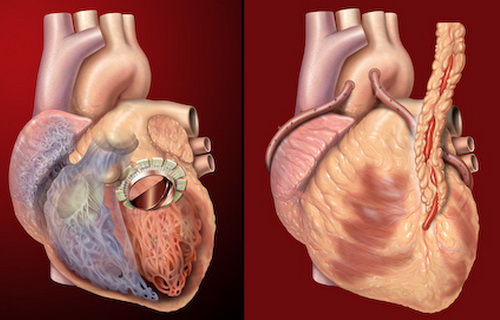
The "Good, Bad And Ugly" Facts About Heart Attacks
A heart attack usually results from a sharp, sudden interruption of blood supply to the heart. The arteries that supply blood to the heart muscles, experience a major blockage that results in major damage to the heart muscles, causing it become weak and underperform. We are at a higher risk risk for heart disease, and much higher than past generations. Today, cholesterol, diabetes, hypertension, strokes and related disorders are now common-place, with more than 1 million Americans suffering a heart attack daily. The good news is that a healthy lifestyle, prompt action to receiving care, early diagnosis, early care and emergency treatment, ongoing treatment and follow-up visits, and a healthier lifestyle can greatly reduce the mortality rates attributed to heart attacks.
- Important notification about information and brand names used in this slideshow!
- Photo courtesy of Patrick J. Lynch by Flickr : www.flickr.com/photos/patrlynch/450128330/


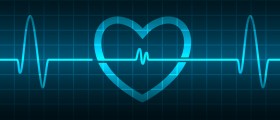


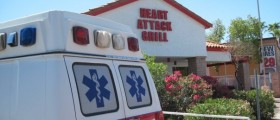






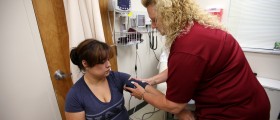




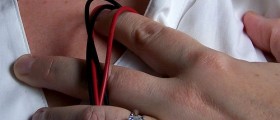

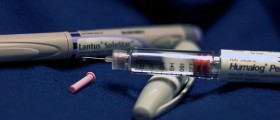






Your thoughts on this
Loading...